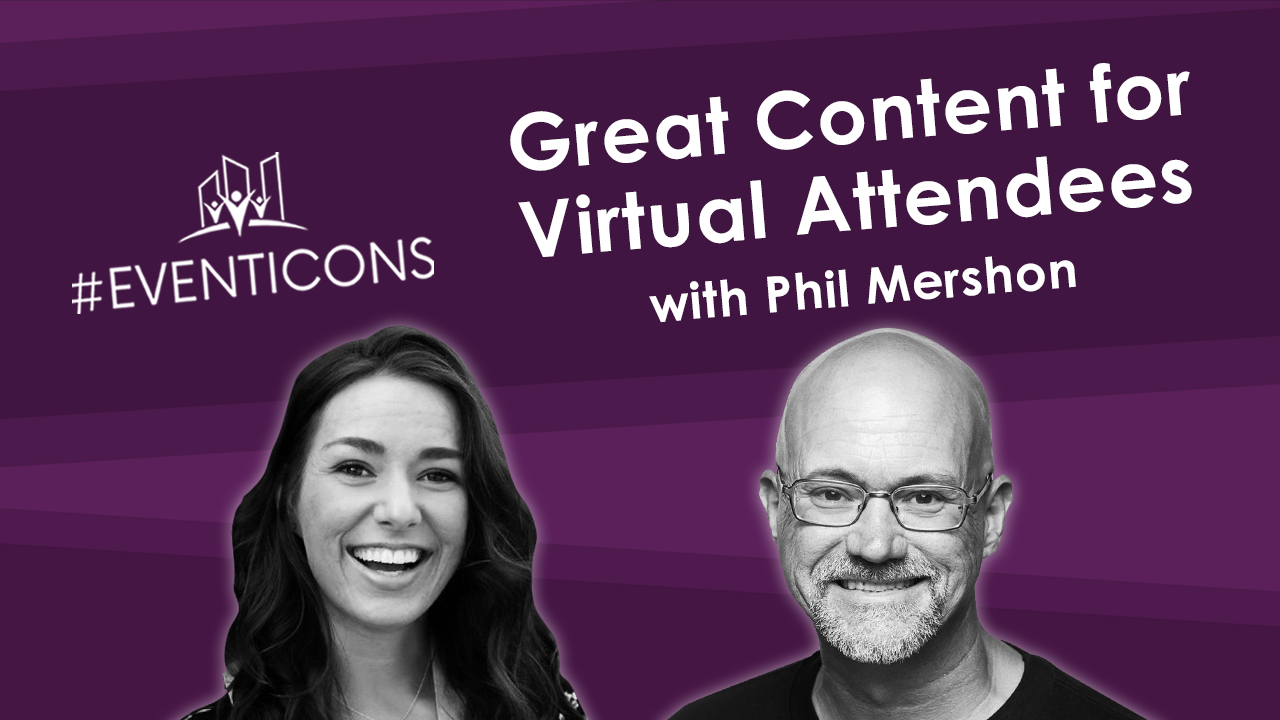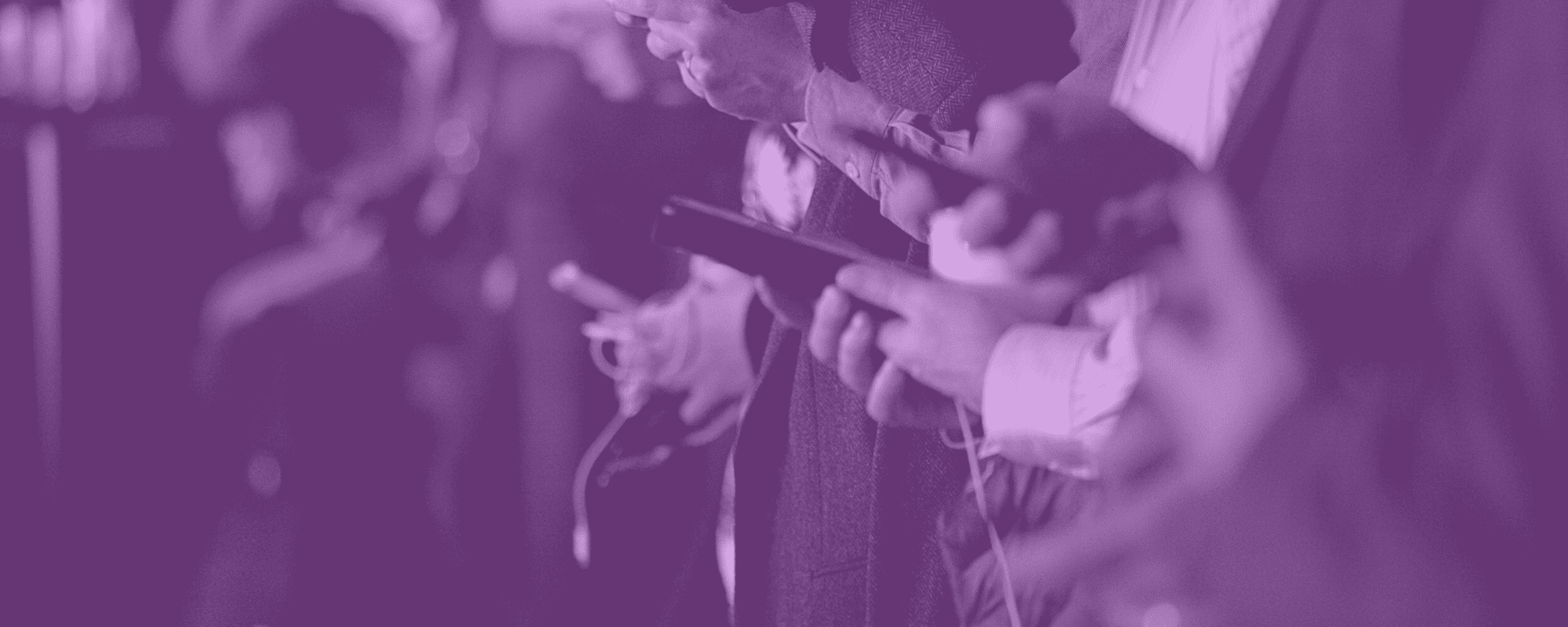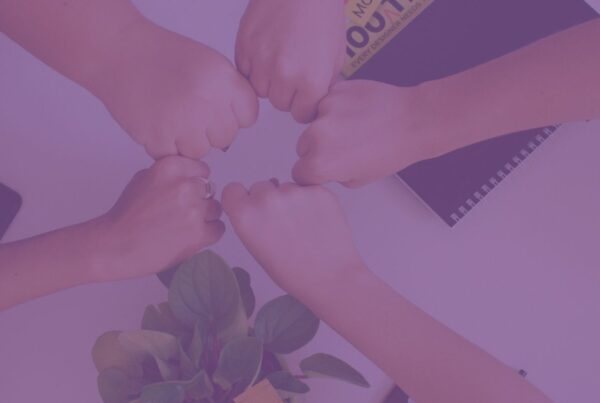How many times have you heard the expression “content is king”? Probably enough that you roll your eyes every time someone utters it. But that’s the thing about clichés – they exist for a reason. And when it comes to the exciting world of digital experiences, this particular saying still applies. Of course, crafting amazing content for virtual events comes with its own set of challenges. Not only is this particular slice of the experience more important than ever, but it can also get tricky.
This is why we’re happy to welcome Phil Mershon to another episode of #EventIcons. As the Director of Events for the Social Media Examiner, Phil was also faced with a brand new set of challenges once the pandemic hit. But he was no stranger to creating virtual events that stood out thanks to their smart use of content. So join Sarah as she picks Phil’s brain on how to craft the best content for virtual events in an engaging and unforgettable fashion!

This Is Where We Are
As we mentioned above, the folks at Social Media Examiner aren’t new to this virtual event space. “We’ve created online summits long before people were doing online events”, says Phil. “We were written up as one of the pioneers in this world eight or nine years ago. And we’re continuing to do it, even though now everyone’s doing it and we’re all figuring this out together”.
“We do a conference called Social Media Marketing World, which we’re having to forgo next year because it’s just not being allowed in San Diego. So yeah everything we’re doing in 2021 is going to somehow be online. So we have to figure out how do you make online education valuable enough that people are getting the transformation that they need so they can be successful in their jobs? Because that hasn’t stopped. Everyone has to still figure out how to progress developmentally in becoming the best they can be at whatever job it is. And I think it’s still possible, but there are things that you need to think about to be effective at that”, he adds.
Content For Virtual Events: The Audience
When tackling the topic of content for virtual events, Phil circles it back to the audience. “We are organizers of events, but as you’re talking to your speakers, you’re looking for speakers who understand this principle that you, as the speaker are not the guru. Even though you might have a lot of knowledge, the hero of your talk is the person that’s sitting on the other side of the screen from you. So the person who you’re speaking to, they need what you have, they’re coming to you as a mentor. Yes. But you’re there to serve them. So the better you understand who that audience is, the more you’re going to succeed and the engagement will come as they sense that you understand where they sit”.
A Perfect Example
“We had a speaker who spoke for us two years in a row. And he was one of our top-rated speakers the first year. And he was one of our bottom two rated speakers the second year. So in both cases, he thought he was bringing an amazing talk to our audience. And the first year the audience responded saying, yes, we loved it. It was amazing. And the second year he gave a talk that he had given at a different conference that really resonated at that conference. But he hadn’t thought through that this might not be the right fit at our event. And that’s obviously what it turned out to be. As I talked to him and debrief with him afterward, he realized that he had misunderstood who the audience was. In the other event, he was talking to entrepreneurs and people who want to be YouTube because he’s a YouTube expert”, Phil recalls.
“And he came to our conference and they’re not YouTube. They’re small business marketers who are just trying to figure out how do I use YouTube to market my business? And if you’re not in the YouTube space, it sounds the same, but it’s an important nuance that when he understood that he realized, no wonder I bombed. So the principle of knowing who’s sitting on the other side of the screen, what pain points do they have? How do your knowledge and experience have something to offer to them? That’s going to get you the buy-in”, he adds.
The Right Medium
“You got to stay in your lane, but you want to be the best version of who you are for the content that you’re delivering”, explains Phil. “So great content needs to be varied. If you’re not changing your pitch, your tone, if you’re just kind of staying at a monotone the whole time, that reflects badly”.
“One of our speakers, he just had so much knowledge that he just kept dumping it. Well, that’s hard to receive, so you’ve got to give people space. And one of the ways you do that is with a story. So I think you got to mix things up. If you’re savvy and you can use multiple different forms of technology, bring videos and graphics in. If you can be more varied that keeps people’s attention”.
“You don’t want to just dump PowerPoint bullet point after bullet point. And it’s just all meaty content. You’ve got to mix some story in there. And I think if you go back to my first point, which is about understanding your audience, it’s going to be also understanding the journey”, he adds.
Crafting Content With Empathy
“I want to understand what you’re thinking. I want to understand what you’re doing. So I know you’re doing something, you’re sitting at a computer, probably at a desk. You’re probably surrounded by kids who are screaming or running around and there are potential distractions in your house. So I know that in a virtual environment, there are things competing for your attention. So I’ve got to stay interesting, but what are you feeling like? Maybe you’re feeling overwhelmed right now. So I want to come to you with a bit of sympathy and I want to make you feel relaxed. Like, hey, this is going to be a great presentation for you because I’m going to solve a problem that I know you have”, says Phil.
“I think the more range of emotions that I can help you experience, even though I can’t see you, it’s going to help you stay with me and eventually remember. So if you remember, you’re going on a journey in any talk, there’s still a journey that we’re going on here. I had a professor who literally pulled out puppets in my accounting class and taught us debits and credits with puppets and he made it interesting”.
Being The Speaker
When it comes to content for virtual events, delivery plays a big part. And Phil has some great thoughts on virtual speakers too! “It’s going to take practice for you to feel comfortable in this setting. So imagine that you would have had a chance to practice and understood how the chat could have factored into your talk. The more times you do it, the more comfortable you’re going to be doing it”, he says.
“I think some of the things that you do on a big stage have to get contained to this little camera that’s sitting right in front of me. So I don’t have a lot of space. So I’ve got to get way better at using my face on a stage. You’ve got lots of gestures and things that you can do, and you’re pacing around the room and you’re working in the room. Well, now you’re a lot more like a TV anchor. You’ve got to figure out how do I communicate?”.
“You shouldn’t constantly go over and look at the comments, that actually can be kind of distracting and could interrupt the flow. But if you intelligently design your talk, let’s say it’s a 30-minute talk. Well maybe three times in those 30 minutes, you’re going to pause and you’re going to look at the comments and engage and it’s at a specific break”, he adds.
Emcees vs Speakers
“I’ve learned that great speakers don’t necessarily make great emcees and vice versa. They are parallel tracks and some people are great at both, but they’re nuanced skillsets”, Phil clarifies. “And you know, the great emcee is elevating the person who’s getting ready to get on stage, but they know when to get out of the way and they know how to create that connection with the audience. And there are some skills that you need to learn to do that well that are different than the skills you learn to be a great speaker”.
Content For Virtual Events: Warm It Up
“One other thing that I would say about how do you make the content better? And it again depends on your event and what you’re talking about. But I think preparatory content, like supplemental content, maybe short little videos that tease people, prepare people”, adds Phil. “Especially if you’re doing something that’s intermediate or advanced training, but there are some people coming who don’t have all the background, or maybe you’re providing some foundational materials that they can use to get themselves ready or get themselves comfortable or familiar with some of the terminology that’s going to be used that you can use to help them get amped up before they come”.
“We’re getting ready to do an event with a guy named Chris Mercer. He goes by Mercer and he teaches Google analytics. And by nature of the way he talks, he gets hundreds of questions during a presentation. So I have a team that’s working with me behind the scenes and they’ve created a Google doc and they are going through all the questions that come in, they’re categorizing them. So when it comes time to ask questions, I can say, okay, now we’re going to go into questions about setting up your Google ads, Google analytics, or now we’re going to talk about reporting. And then I can look through those questions while he’s answering one and pick the ones that I want”, he adds. “Sometimes in the chat it could get crazy out of control with the questions coming through. So I’ve got a team that’s monitoring that. They’re putting it into a document that I can keep it a little bit more static”.
Wrapping It Up
Phil leaves us with some great insights about great content for virtual events. “It comes to this – know your audience, know what they want. So your content has got to address issues that your audience cares about. So the research, do your homework, get to know what they care about. But know your audience too, in terms of where are they when they’re watching you, are they at home or are they at the office? Are they dealing with kids running around or other distractions? Their physical environment, mentally what’s going on for them. How important is this topic? Are they doing it because the boss forced them to come or are they doing it because they really care? And then like, heart-wise, empathy, what’s going on inside here that you can connect with?”.
“So it’s all, it’s all going to come down to knowing who they are, what kind of job are they in. Why is this important to them, all those things that you have to know as an event planner and as a speaker, then that’s going to make your content more valuable to them. And then you’re going to design the experience with those things in mind. You have to know yourself, of course. You have to know how do I enter into this equation as the mentor or the organizer of this experience? But it’s all to serve. Those people are on the other side of the screen. So know your audience”, he concludes.










